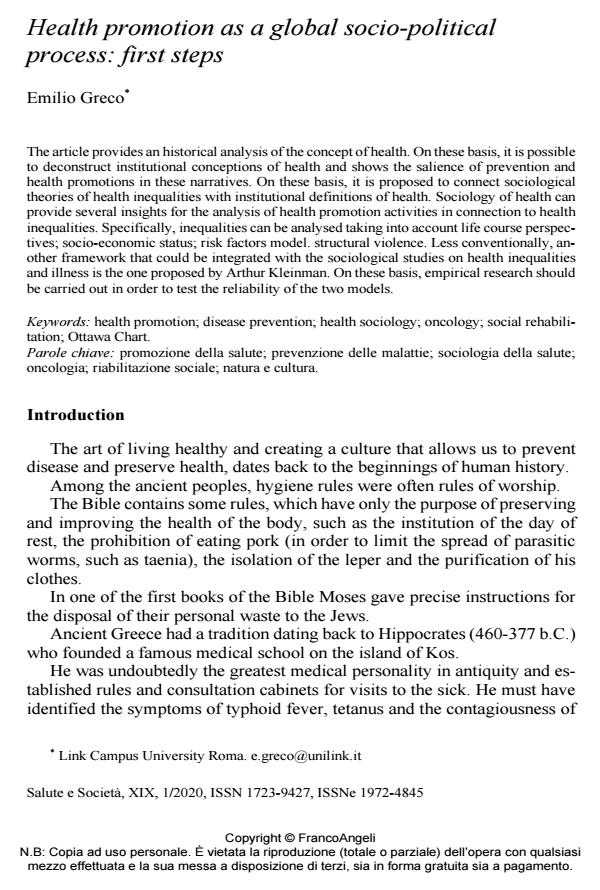Health promotion as a global socio-political process: first steps
Titolo Rivista SALUTE E SOCIETÀ
Autori/Curatori Emilio Greco
Anno di pubblicazione 2020 Fascicolo 2020/1
Lingua Inglese Numero pagine 12 P. 23-34 Dimensione file 137 KB
DOI 10.3280/SES2020-001003
Il DOI è il codice a barre della proprietà intellettuale: per saperne di più
clicca qui
Qui sotto puoi vedere in anteprima la prima pagina di questo articolo.
Se questo articolo ti interessa, lo puoi acquistare (e scaricare in formato pdf) seguendo le facili indicazioni per acquistare il download credit. Acquista Download Credits per scaricare questo Articolo in formato PDF

FrancoAngeli è membro della Publishers International Linking Association, Inc (PILA)associazione indipendente e non profit per facilitare (attraverso i servizi tecnologici implementati da CrossRef.org) l’accesso degli studiosi ai contenuti digitali nelle pubblicazioni professionali e scientifiche
The article provides an historical analysis of the concept of health. On these basis, it is possi-ble to deconstruct institutional conceptions of health and shows the salience of prevention and health promotions in these narratives. On these basis, it is proposed to connect sociological theories of health inequalities with institutional definitions of health. Sociology of health can provide several insights for the analysis of health promotion activities in connection to health inequalities. Specifically, inequalities can be analysed taking into account life course perspec-tives; socio-economic status; risk factors model. structural violence. Less conventionally, an-other framework that could be integrated with the sociological studies on health inequalities and illness is the one proposed by Arthur Kleinman. On these basis, empirical research should be carried out in order to test the reliability of the two models. .
Parole chiave:Promozione della salute; prevenzione delle malattie; sociologia della salute; oncologia; riabilitazione sociale; natura e cultura
Emilio Greco, Health promotion as a global socio-political process: first steps in "SALUTE E SOCIETÀ" 1/2020, pp 23-34, DOI: 10.3280/SES2020-001003